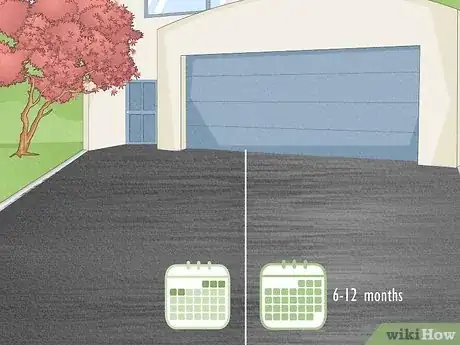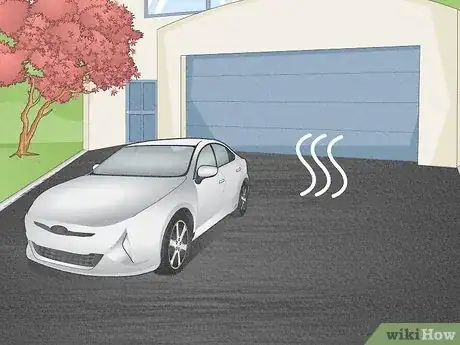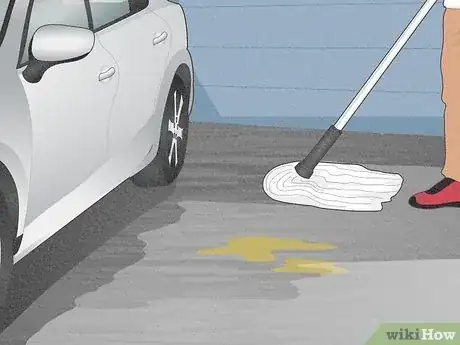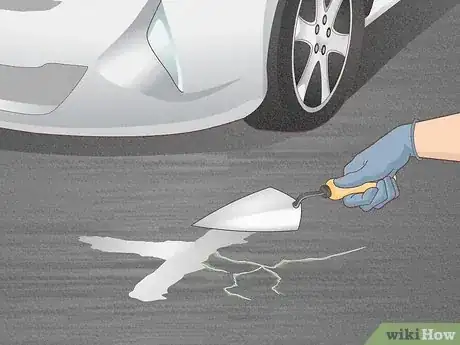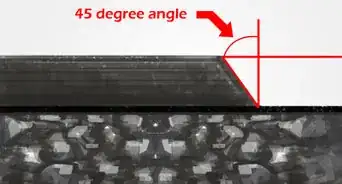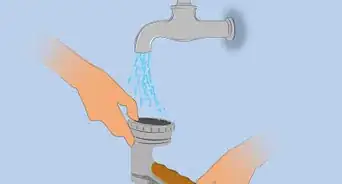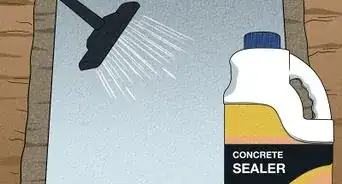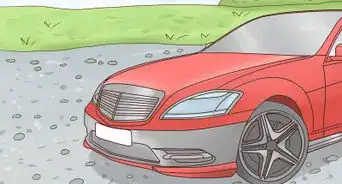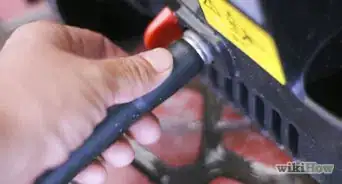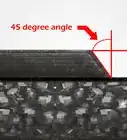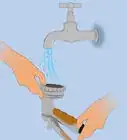This article was co-authored by wikiHow staff writer, Johnathan Fuentes. Johnathan Fuentes is a writer based in the New York City region. His interests as a writer include space exploration, science education, immigration, Latinx cultures, LGBTQ+ issues, and long-form journalism. He is also an avid hiker and has backpacked in Alaska and Newfoundland, Canada. A son of Cuban immigrants, he is bilingual in English and Spanish. Prior to joining wikiHow, he worked in academic publishing and was a freelance writer for science websites. He graduated from Columbia University in 2021, where he studied nonfiction writing and wrote for the student newspaper. He is currently counting down the seconds until the release of Kerbal Space Program 2 in 2023—a game that will almost certainly take up what little free time he has.
This article has been viewed 1,202 times.
Learn more...
A new asphalt driveway can really spruce your home or office. The clean look and smooth driving experience can make it well worth the cost—but how long should you wait before driving or parking on new asphalt? It’s an important question. Drive on it too soon, or park in one spot for too long, and you’ll damage your driveway before it’s had a chance to dry or fully cure. Do things right, though, and your driveway could stay in great shape for years to come. Looking to take care of your new asphalt driveway? Keep reading to learn the essentials, including how long to wait before driving on asphalt and how to maintain it to make it last.
Things You Should Know
- Asphalt takes up to 5 days to dry and 6-12 months to fully cure. “Dried” asphalt is no longer sticky and soft, while “cured” asphalt is fully hardened.
- You can safely drive and park on asphalt after about 5 days, but the curing process will continue for several months.[1]
- Ask your contractor for an estimate of the curing time. When in doubt, err on the side of caution and assume it’ll take 12 months.
- To prevent indentations and cracks, park your car in a slightly different spot every day for the first 6-12 months. Use fillers and sealers to fill in cracks and holes as they appear.
Steps
When can you drive or park on new asphalt?
-
1You can safely drive and park on asphalt once it’s dry. You’ll know it’s dry when it’s no longer soft and sticky to the touch. This usually takes about 5 days. At this point, you won’t risk leaving tire marks or damaging your new driveway.
- You can usually walk on asphalt 2 days after it’s applied. However, you’ll still have to wait 5 days before driving on it.[3]
- Your contractor may give you specific instructions for when it’s safe to walk, drive, and park on your new driveway.
-
2Park your car in different spots each day for the first 6-12 months. This prevents indentations from forming in a single spot due to the weight of the car. After 6-12 months, the asphalt will be fully cured—that is, fully hardened—and you can park wherever you like.
- If you have a narrow driveway, try parking your car farther up or down the driveway each day.
- If you can’t avoid parking your car in one spot (for example, if you park it in a very small driveway), try parking it on large wooden planks. This will distribute your car’s weight and prevent indentations in the asphalt.
- If you park in a parking lot, choose a slightly different spot every day.
- Avoid turning your tires while your car is stationary, as this could leave impressions in the asphalt.[4]
- Try not to leave kickstands, barbeques, and other items on your asphalt for long periods of time. These tend to leave indentations.[5]
- Your contractor can give you a specific estimate for the curing time. When in doubt, err on the side of caution and assume it’ll take 12 months.
How to Protect Your New Asphalt
-
1Keep your asphalt clean. Gasoline, oil, antifreeze, or other chemical spills can corrode your asphalt, so be sure to mop these up when you see them. Remember to check your usual parking areas regularly for leaks and spills.[6]
- Try to clean up any chemicals as soon as possible.
-
2Fix cracks and holes as they appear. While they’re a nuisance, cracks and holes occur naturally as your asphalt settles and cures. You can prevent them from spreading by filling them in with fillers and sealers.[7]
- Put a “retainer” on the edges of the asphalt to prevent it from over-expanding and cracking. A retainer can be made of gravel or a combination of soil and grass seeds.
-
3Adding a sealcoat helps your asphalt last longer. Sealcoating fixes cracks and prevents chemicals, rain, and debris from penetrating the asphalt. Your contractor will give specific advice, but generally speaking, a sealcoat should first be applied at least 90 days after your asphalt is installed, once the ambient air temperature is below 80°F (26°C).
- Apply another sealcoat 1 year after the asphalt is first installed, then every 2-4 years after that.[8]
References
- ↑ https://naturesperspective.com/documents/Care%20of%20Your%20New%20Asphalt%20Driveway%202013.pdf
- ↑ https://naturesperspective.com/documents/Care%20of%20Your%20New%20Asphalt%20Driveway%202013.pdf
- ↑ https://naturesperspective.com/documents/Care%20of%20Your%20New%20Asphalt%20Driveway%202013.pdf
- ↑ https://youtu.be/9tazcIhm2w4?t=26
- ↑ https://youtu.be/9tazcIhm2w4?t=38
- ↑ https://youtu.be/9tazcIhm2w4?t=55
- ↑ https://youtu.be/9tazcIhm2w4?t=94
- ↑ https://youtu.be/htOyRzKXUuc?t=45
